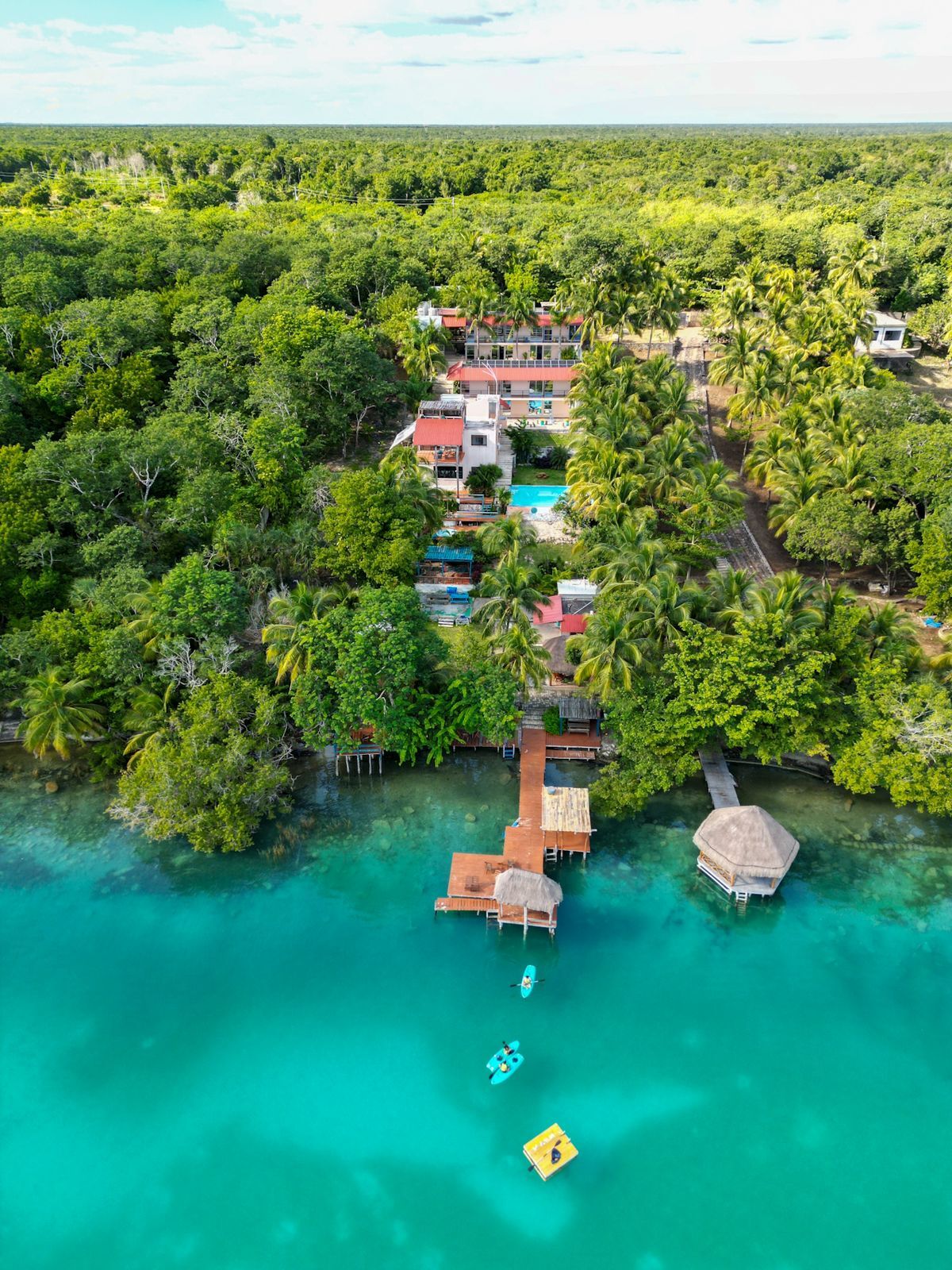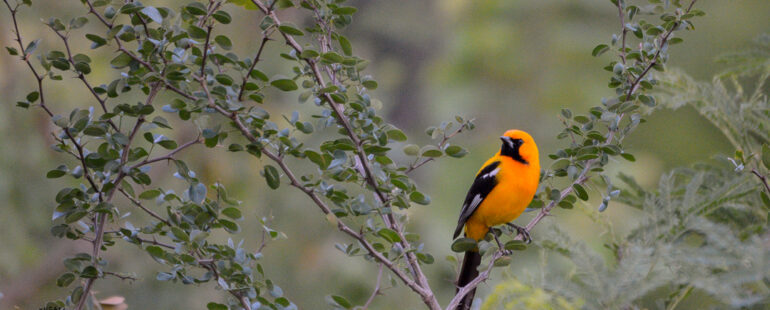Three and a half day birding tour December 2023
This birding tour was designed for our visitors from New York City. The plan was to see as many bird species as possible in the spam of time designed for the tour. Having meals in good restaurants with good Mexican and Yucatecan food was also a big part of this trip.
Day 1. Mérida
Our tour started in Mérida where I picked up Ariel and Shane very early at the hotel where they stayed the night before the beginning of our trip. We made a very quick stop at an Oxxo store for some coffee and then we drove to our first birding destination. The Misnebalam Road, one of the top birding hotspots of the Yucatan Peninsula. We birded the ranches and dry forest of Misnebalam for about two hours, walking a little less than 3 kilometers and picked up 52 species. Highlights for the first stop include: Ruddy Ground Dove, Groove-billed Ani, Cinnamon Hummingbird, White-tailed Hawk, Gray Hawk, Ferruginous Pygmy-Owl, Turquoise-browed Motmot, Yucatan Woodpecker, Merlin, White-fronted Parrot, Olive-throated Parakeet, Yellow-throated Vireo, Green Jay, Olive Sparrow, Hooded Oriole, Orange Oriole, Altamira Oriole, Baltimore Oriole, Gray-crowned Yellowthroat, Blue-gray Tanager and Cinnamon-bellied Saltator.
Gray-crowned Yellowthroat (Geothlypis poliocephala) at the Misnebalam road.
After that, we moved to the coast, looking for other endemic birds plus all of the waders and shorebirds. Fortunately for us, we recently located a male Mexican Sheartail perch, so we just walked a little bit and were able to see and photograph this beautiful endemic bird. Top birds from our second stop on the coast include: Blue-winged Teal, Black-throated Bobwhite, Mexican Sheartail, Black-necked Stilt, Semipalmated Plover, Marbled Godwit, Ruddy Turnstone, Least Sandpiper, Western Sandpiper, Common Tern, Sandwich Tern, Royal Tern, Magnificent Frigatebird, Brown Pelican, Black Vulture, Osprey, Tropical Kingbird, Mangrove Swallow, Yucatan Wren, Tropical Mockingbird and Northern Cardinal.
Mexican Sheartail (Doricha eliza) an endemic and endangered species of the Yucatan Peninsula and Mexico.
Then, we moved to another spot on the coast that had the Flamingos feeding around and has been very productive lately. Another old road, but this one, goes across a mangrove/swampy area in the Progreso municipality. Besides the 140 American Flamingos that greeted us there, we saw some other interesting birds like Anhinga, Neotropic Cormorant, Little Blue Heron, Tricolored Heron, Reddish Egret, White Ibis, Lesser Yellow-headed Vulture, Short-tailed Hawk, Crested Caracara, Vermilion Flycatcher, Yucatan Gnatcatcher, Savannah Sparrow, Northern Waterthrush, Yellow Warbler and Palm Warbler.
A non-breeding male Yucatan Gnatcatcher (Polioptila albiventris) photographed in Progreso.
We finished with the birding and decided that it was time for lunch, so we drove to a restaurant right in front of the beach for some really good seafood, of course, birding never stops really, so we were looking at the Frigatebirds while they were soaring slowly above our heads.
We checked in at the hotel for that night, rested the hottest part of the day and then when the weather was good for birding, we went to the best ecological park for birding in Merida looking to add some other species to the trip list. After spending an hour at the ecological park, we managed to pick up 49 species, some of the highlights include: Black-bellied Whistling-Duck, Least Grebe, Pied-billed Grebe, Vaux’s Swift, Common Gallinule, Limpkin, Northern Jacana, Spotted Sandpiper, Wood Stork, Anhinga, American White Pelican, Yellow-crowned Night Heron, Green Heron, Snail Kite, Belted Kingfisher, Boat-billed Flycatcher, Couch’s Kingbird, Rufous-browed Peppershrike, Cave Swallow, Clay-colored Thrush, Orchard Oriole, Common Yellowthroat, Summer Tanager and Morelet’s Seedeater.
Snail Kite (Rostrhamus sociabilis) photographed in Merida.
Day 2. Valladolid
For our second day, we left Mérida very early in the morning and drove for about two hours towards Valladolid, going to the semi-evergreen forests of the Yucatan looking to be in the area for a completely different set of birds. The ride wasn’t easy, as it was raining very hard during the whole drive, but as if we had a four leaf clover, everytime we arrived to a birding spot rain stopped and as soon as we finished with the birding, the rain will immediately start pouring again! Anyways, after birding for a little less than four hours and walking four kilometers, we managed to see and hear 70 different species! Highlights include: White-tipped Dove, Squirrel Cuckoo, Green-breasted Mango, Ruby-throated Hummingbird, Canivet’s Emerald, Buff-bellied Hummingbird, White-bellied Emerald, Roadside Hawk, Lesson’s Motmot, Lineated Woodpecker, White-fronted Parrot, Tawny-winged Woodcreeper, Gray-collared Becard, Rose-throated Becard, Northern Bentbill, Greenish Elaenia, Northern Tropical Pewee, Yucatan Flycatcher, Dusky-capped Flycatcher, Mangrove Vireo, Yucatan Jay, Spot-breasted Wren, Black Catbird, Scrub Euphonia, Yellow-throated Euphonia, Yellow-breasted Chat, Gray-throated Chat, Yellow-billed Cacique, Melodious Blackbird, Blue-winged Warbler, Black-and-white Warbler, Hooded Warbler, Northern Parula, Magnolia Warbler, Black-throated Green Warbler, Rose-throated Tanager, Rose-breasted Grosbeak, Blue Bunting, Gray-headed Tanager, Yellow-faced Grassquit and Black-headed Saltator.
Rose-throated Tanager (Piranga roseogularis) another Yucatan Peninsula endemic.
After our morning birding and on our way to town, we found a Bat Falcon perched on top of a satellite tower.
Once in Valladolid, we went for lunch in a restaurant right next to a Cenote, where we ate Yucatecan food and cool down a little bit. Then we went to hotel for a check in and a break and then going out again for more birding in the afternoon. At the hotel we spotted a pair of Masked Tityras feeding on a fruiting tree, they were very showy and posed for pictures.
After a little break at the hotel, we went birding to a different spot, this time a road near the Amazili Nature Reserve with crops at the edge of the forest, good for spotting jungle birds getting a free meal. It wasn’t as birdy as it was in the morning and the weather was not collaborating but we still managed to see almost 40 species including some new-for-the-trip ones. Highlights include: Plain Chachalaca, Common Pauraque, Yellow-bellied Sapsucker, Lineated Woodpecker, Golden-fronted Woodpecker, American Kestrel, Yucatan Jay, Cave Swallow, White-bellied Wren, Gray Catbird, Black-cowled Oriole, Altamira Oriole, Northern Parula, Yellow-throated Warbler, Black-headed Saltator.
White-fronted Parrots (Amazona albifrons).
We went back to town for a very good dinner in downtown Valladolid and then for a good night sleep as the next day we would have to wake up very early again for a two hour drive towards Felipe Carrillo Puerto.
Day 3. Felipe Carrillo Puerto and Bacalar
For our third day, we left Valladolid early and drove to “Reserva Ejidal Much Kanan K’aax”. Once again, looking for a little bit of a different habitat which of course would translate into different birds. Once there, we slowly birded a very active dirt road picking up 52 species, including: Scaled Pigeon, Wedge-tailed Sabrewing, Collared Aracari, Pale-billed Woodpecker, White-crowned Parrot, Olive-throated Parakeet, Plain Xenops, Black-crowned Tityra, Masked Tityra, Stub-tailed Spadebill, Yellow-olive Flatbill, Northern Beardless-Tyrannulet, Yucatan Flycatcher, Tawny-crowned Greenlet, Lesser Greenlet, Brown Jay, Green Jay, Long-billed Gnatwren, White-browed Gnatcatcher, Green-backed Sparrow, Yellow-billed Cacique, American Redstart, Rose-throated Tanager, Red-throated Ant-Tanager, Gray-throated Chat.
Collared Aracari (Pteroglossus torquatus).
After our walk on the first dirt road we moved to another small reserve called “Siijil Noh Ha”. This one is right in front of a lagoon and has some other trails in a more closed habitat. We spent an hour birding there and got 24 species. Some of the highlights include: Wedge-tailed Sabrewing, Olive-throated Parakeet, Olivaceous Woodcreeper, Red-capped Manakin, Stub-tailed Spadebill, Eye-ringed Flatbill, Yellow-bellied Flycatcher, Mangrove Swallow, Yellow-throated Euphonia, Rose-throated Tanager and Red-throated Ant-Tanager.
We left Felipe Carrillo Puerto and drove towards Bacalar where we were planning to spend the night. Had some wonderful lunch and then checked in at the Bacalar B7 Blue our hotel right in front of the lagoon where we were going to have some birding in the afternoon and there was also some scheduled time for some kayaking or swimming if anyone wanted to.

Aerial view of the Bacalar B7 Blue Hotel where we stayed.
As soon as we parked the car, there were birds everywhere. There was a Yellow-trumpet tree flowering at the parking lot and a White-bellied Emerald was feeding like crazy on it, ignoring people (which turned out really good for pictures) but literally, in just half an hour standing in the parking lot we saw: Plain Chachalaca, Cinnamon Hummingbird, Great Kiskadee, Social Flycatcher, Tropical Kingbird, White-eyed Vireo, Brown Jay, Tropical Mockingbird, Black-cowled Oriole, Hooded Oriole, Melodious Blackbird, Magnolia Warbler, Yellow-throated Warbler, Summer Tanager and Yellow-winged Tanager.
White-bellied Emerald (Chlorestes candida).
After a little break, we went for a walk outside the hotel on a dirt road on the edge of the forest. We walked a little bit less than 2 km for 2 hours and saw 45 bird species. I’m not sure what was the most interesting thing of our walk in the afternoon, either coming across a huge ant swarm that had birds on a feeding frenzy (although they were actually not feeding on the ants but in spiders that were running away from the ant swarm!) or the incredible amount of parrots and parakeets that we saw in big flocks. Highlights included: Red-billed Pigeon, Black-headed Trogon, Gartered Trogon, White-necked Puffbird, Lineated Woodpecker, Collared-forest Falcon, Red-lored Parrot, White-fronted Parrot, Olive-throated Parakeet, Mayan Antthrush, Masked Tityra, Rose-throated Becard, Boat-billed Flycatcher, Rufous-browed Peppershrike, Brown Jay, Yucatan Jay, Red-throated Ant-Tanager and Black-headed Saltator.
A flock of Yucatan Jays (Cyanocorax yucatanicus).
We went back to the hotel to leave our stuff and go for dinner and once we were about to hit the road, we saw a silhouette arriving to an electricity pole, it was a Northern Potoo! Unfortunately, none of us had birding gear at the moment but the light was good enough for a decent view and even some cellphone pictures.
Day 4. Kohunlich Archaeological Site
The next day, we woke up at 6 am and drove for about an hour to the Kohunlich Archaeological Site. Before actually going into the ruins, we did some birding on the road. It turned out very productive as we saw 42 species, including: Scaled Pigeon, Red-billed Pigeon, Rufous-tailed Hummingbird, Black-headed Trogon, Pale-billed Woodpecker, White-crowned Parrot, Olive-throated Parakeet, Barred Antshrike, White-collared Manakin, Bright-rumped Attila, Wood Thrush, Black-cowled Oriole, Ovenbird, Blue Bunting, Red-legged Honeycreeper and Blue-black Grassquit.
Then we went inside the Archaeological Site for some more birding and even though there were employees working on restoring the ruins and a little more movement than usual, we still managed to get 40 species in the ruins, with one of the more desired birds for Ariel and Shane, the Red-capped Manakin. Highlights for the Kohunlich Archaeological Site include: Turkey Vulture, Lesson’s Motmot, Collared Aracari, Ladder-backed Woodpecker, Golden-olive Woodpecker, Red-lored Parrot, Red-capped Manakin, Ochre-bellied Flycatcher, Philadelphia Vireo, Louisiana Waterthrush, Black-throated Green Warbler and Red-legged Honeycreeper.
Red-capped Manakin (Ceratopipra mentalis).
This last stop at the ruins, represented the end of our birding trip as after that, we went back to the Bacalar B7 Hotel to grab our stuff and drive all the way to Tulum, where I dropped Ariel and Shane so they could continue with their holidays and I drove back home to Mérida.
The total of species seen and heard for this trip was 207.
Written by Luis Trinchan Guerra.






